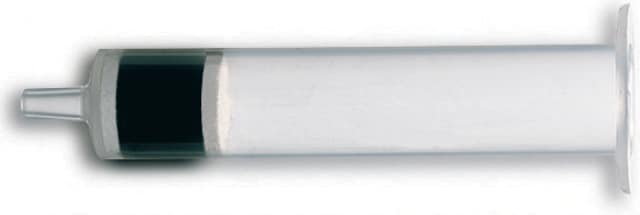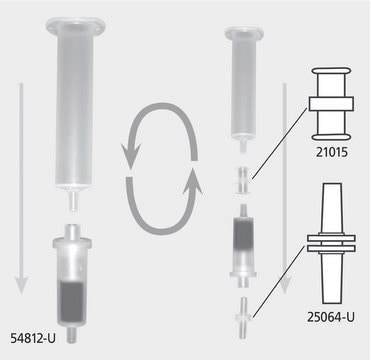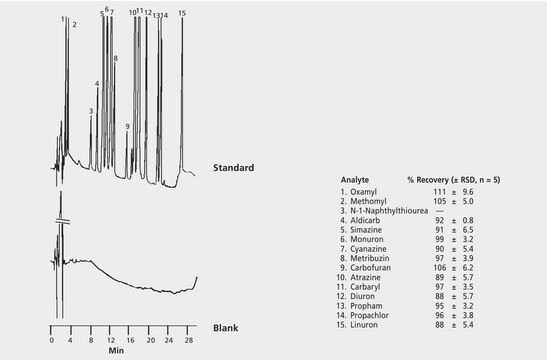57088
Supelclean™ ENVI-Carb™ SPE Tube
bed wt. 250 mg, volume 3 mL, pk of 54
Recommended Products
material
polypropylene tube
Quality Level
product line
Supelclean™
composition
bed wt., 250 mg
packaging
pk of 54
technique(s)
solid phase extraction (SPE): suitable
surface area
100 m2/g
volume
3 mL
matrix active group
carbon phase
particle size
120-400 mesh
application(s)
food and beverages
separation technique
reversed phase
Looking for similar products? Visit Product Comparison Guide
Related Categories
General description
Retention Mechanism: Reversed-phase
Sample Matrix Compatibility: Aqueous solutions (drinking, ground, waste water)
- Surface area: 100m2/g; Particle Sz.:120/400 mesh
- Extreme affinity for organic polar and non-polar compounds from both non-polar and polar matrices when used under reversed-phase conditions
- Carbon surface comprised of hexagonal ring structures, interconnected and layered into graphitic sheets
- Non-porous nature of the carbon phase allows for rapid processing, adsorption does not require analyte dispersion into solid phase pores
- Independent investigators have found ENVI-Carb extremely useful for the rapid sample preparation of over 200 pesticides from various matrices including ground water, fruits and vegetable
Application
Legal Information
Storage Class Code
11 - Combustible Solids
WGK
nwg
Flash Point(F)
Not applicable
Flash Point(C)
Not applicable
Certificates of Analysis (COA)
Search for Certificates of Analysis (COA) by entering the products Lot/Batch Number. Lot and Batch Numbers can be found on a product’s label following the words ‘Lot’ or ‘Batch’.
Already Own This Product?
Documents related to the products that you have purchased in the past have been gathered in the Document Library for your convenience.
Difficulty Finding Your Product Or Lot/Batch Number?
How to Find the Product Number
Product numbers are combined with Pack Sizes/Quantity when displayed on the website (example: T1503-25G). Please make sure you enter ONLY the product number in the Product Number field (example: T1503).
Example:
Additional examples:
705578-5MG-PW
PL860-CGA/SHF-1EA
MMYOMAG-74K-13
1000309185
enter as 1.000309185)
Having trouble? Feel free to contact Technical Service for assistance.
How to Find a Lot/Batch Number for COA
Lot and Batch Numbers can be found on a product's label following the words 'Lot' or 'Batch'.
Aldrich Products
For a lot number such as TO09019TO, enter it as 09019TO (without the first two letters 'TO').
For a lot number with a filling-code such as 05427ES-021, enter it as 05427ES (without the filling-code '-021').
For a lot number with a filling-code such as STBB0728K9, enter it as STBB0728 without the filling-code 'K9'.
Not Finding What You Are Looking For?
In some cases, a COA may not be available online. If your search was unable to find the COA you can request one.
Articles
Reversed-phase interaction will retain most molecules with hydrophobic character; it is very useful for extracting analytes that are very diverse in structure within the same sample.
Related Content
Solid phase extraction (SPE) is a technique used for rapid, selective sample preparation and purification prior to chromatographic analysis (e.g. HPLC, GC, TLC). SPE is used to exchange sample matrices, concentrate analytes, and remove interferences and contaminants to improve data and protect the analytical column.
Chromatograms
application for SPE, application for HPLCOur team of scientists has experience in all areas of research including Life Science, Material Science, Chemical Synthesis, Chromatography, Analytical and many others.
Contact Technical Service



